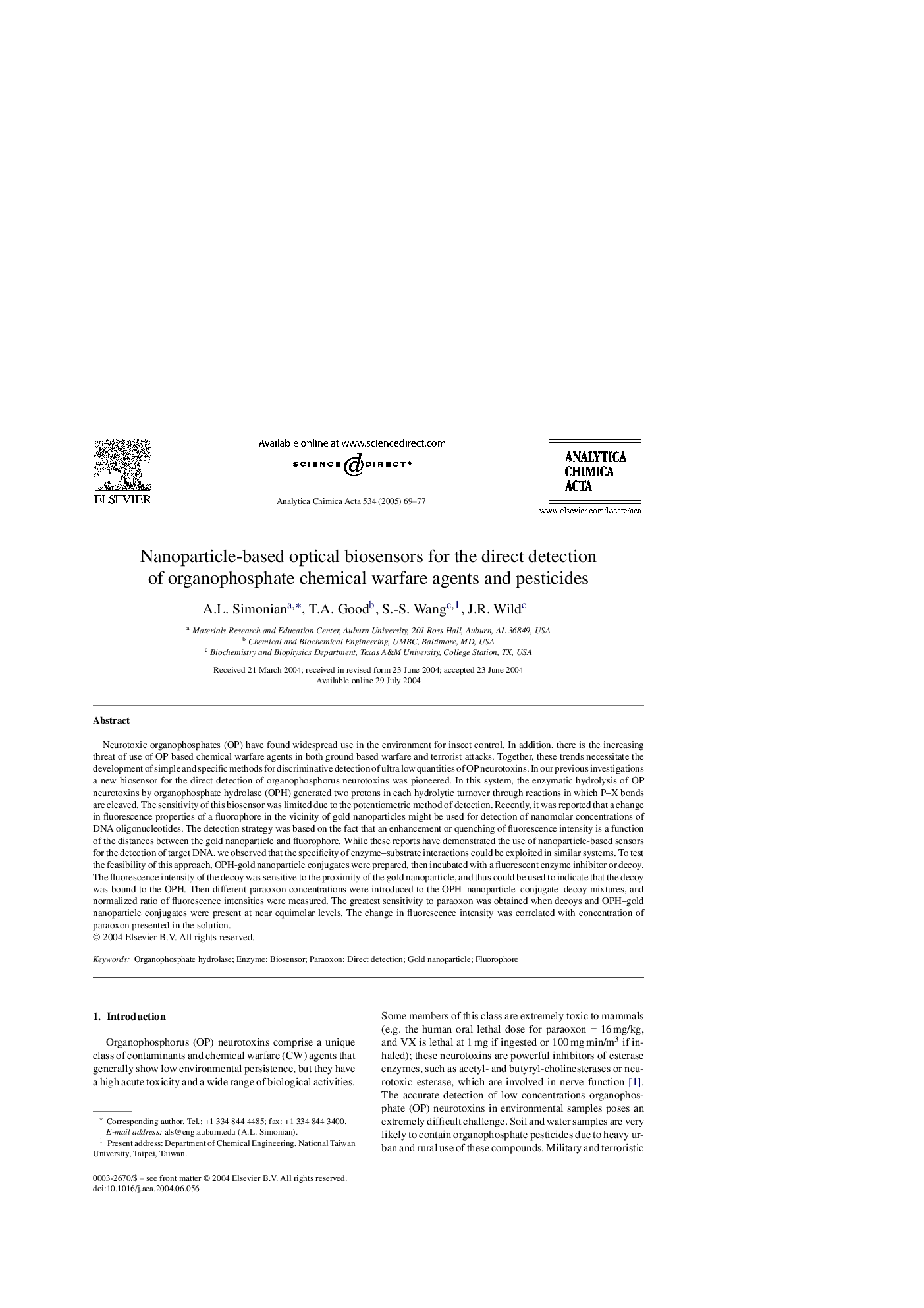| Article ID | Journal | Published Year | Pages | File Type |
|---|---|---|---|---|
| 10529319 | Analytica Chimica Acta | 2005 | 9 Pages |
Abstract
Neurotoxic organophosphates (OP) have found widespread use in the environment for insect control. In addition, there is the increasing threat of use of OP based chemical warfare agents in both ground based warfare and terrorist attacks. Together, these trends necessitate the development of simple and specific methods for discriminative detection of ultra low quantities of OP neurotoxins. In our previous investigations a new biosensor for the direct detection of organophosphorus neurotoxins was pioneered. In this system, the enzymatic hydrolysis of OP neurotoxins by organophosphate hydrolase (OPH) generated two protons in each hydrolytic turnover through reactions in which P-X bonds are cleaved. The sensitivity of this biosensor was limited due to the potentiometric method of detection. Recently, it was reported that a change in fluorescence properties of a fluorophore in the vicinity of gold nanoparticles might be used for detection of nanomolar concentrations of DNA oligonucleotides. The detection strategy was based on the fact that an enhancement or quenching of fluorescence intensity is a function of the distances between the gold nanoparticle and fluorophore. While these reports have demonstrated the use of nanoparticle-based sensors for the detection of target DNA, we observed that the specificity of enzyme-substrate interactions could be exploited in similar systems. To test the feasibility of this approach, OPH-gold nanoparticle conjugates were prepared, then incubated with a fluorescent enzyme inhibitor or decoy. The fluorescence intensity of the decoy was sensitive to the proximity of the gold nanoparticle, and thus could be used to indicate that the decoy was bound to the OPH. Then different paraoxon concentrations were introduced to the OPH-nanoparticle-conjugate-decoy mixtures, and normalized ratio of fluorescence intensities were measured. The greatest sensitivity to paraoxon was obtained when decoys and OPH-gold nanoparticle conjugates were present at near equimolar levels. The change in fluorescence intensity was correlated with concentration of paraoxon presented in the solution.
Keywords
Related Topics
Physical Sciences and Engineering
Chemistry
Analytical Chemistry
Authors
A.L. Simonian, T.A. Good, S.-S. Wang, J.R. Wild,
